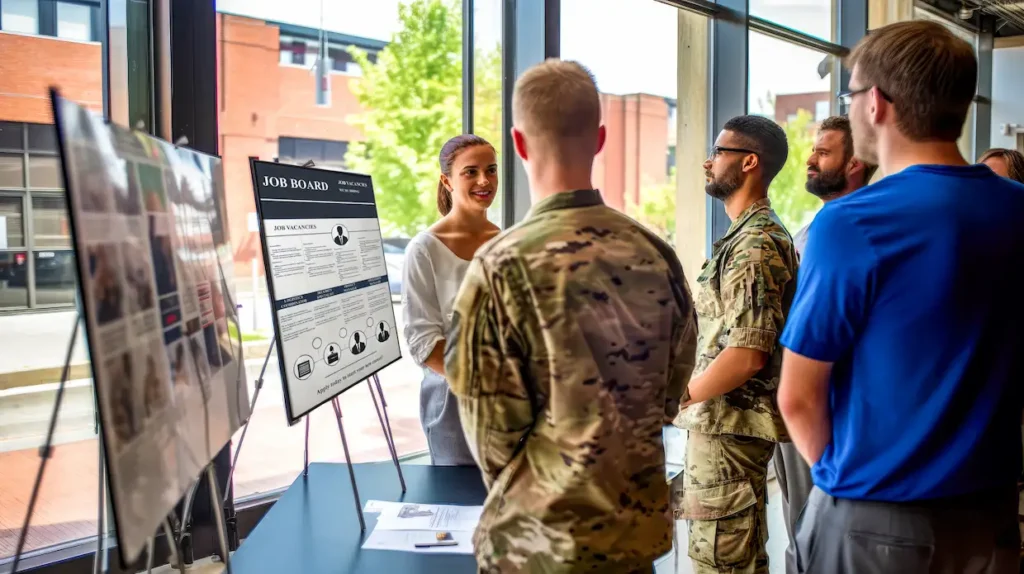Coming home after a military deployment isn’t simply a happy ending—it’s the beginning of a complex transition. For service members and their families, reintegration after a deployment represents a significant life change that requires patience, understanding, and support. Whether you’re a returning service member, a spouse, parent, child, or friend of someone who has deployed, understanding this process is crucial for successful adjustment to civilian life.
Understanding the Reintegration Process
Reintegration isn’t a single event that occurs when a service member steps off the plane. Rather, it’s a dynamic, ongoing process that begins before homecoming and continues long after the initial reunion. Military OneSource outlines several key stages in the reintegration journey:
- Pre-entry phase: Characterized by anticipation and final preparations
- Reunion phase: The initial homecoming celebration
- First week: A period of busy adjustments and initial awkwardness
- First month: When disruptions may occur and deeper issues might surface
- Normalization: Establishing a “new normal” over the first year and beyond
What many don’t realize is that this process rarely follows a straight line. Instead, reintegration typically ebbs and flows, with progress and setbacks occurring throughout. Both service members and their families must adapt to changes that have developed during separation—changes that may not be immediately apparent during the joy of homecoming.
The Psychological Journey for Service Members
Mental Health Challenges
For returning service members, the psychological adjustment can be one of the most difficult aspects of coming home. Statistics show approximately 30% of service members returning from recent conflicts experience symptoms of psychological distress, including:
- Post-Traumatic Stress Disorder (PTSD)
- Anxiety
- Depression
- Persistent feelings of unease
These challenges don’t necessarily indicate a clinical diagnosis but can manifest as difficulty unwinding or constant vigilance—behaviors that made sense in a combat environment but become problematic at home.
Identity Transition and Purpose
“Who am I now?” This question haunts many veterans as they transition from military to civilian life. The military provides clear structure, hierarchy, and purpose—elements that may suddenly disappear upon return. This transition often triggers what researchers describe as an identity crisis, where veterans must reconcile:
- Loss of military identity tied to role and rank
- Decreased sense of purpose and meaning
- Absence of contributing to a collective mission
- Need to establish a new civilian identity
As one veteran described it: “In the military, I knew exactly who I was, what I was supposed to do, and why it mattered. At home, I had to figure all that out again from scratch.”
The “Unit Family” and Social Disconnection
Perhaps one of the least understood aspects of reintegration is the profound sense of loss many veterans feel when separated from their “unit family.” Service members form intense bonds during deployment—connections forged through shared experiences that civilians simply cannot comprehend.
This leads to a painful paradox: being surrounded by loved ones yet feeling profoundly alone. Many veterans report:
- Difficulty relating to civilians who don’t understand their experiences
- Feeling disconnected from family despite physical proximity
- Longing for the camaraderie of fellow service members
- Struggling to communicate about deployment experiences
Family Reintegration Challenges
Readjusting to Changed Family Dynamics
While service members are deployed, families don’t simply pause their lives—they adapt and evolve. The non-deployed partner often takes on new responsibilities, gains independence, and establishes new routines. Children grow, develop new interests, and adjust to the absence of their parent.
Upon the service member’s return, families must renegotiate roles and responsibilities, which can lead to tension around:
- Authority and decision-making
- Financial management
- Parenting approaches and discipline
- Household responsibilities
For military mothers returning home, these challenges can be particularly acute. Society often expects them to seamlessly resume their roles as mothers and wives, even as they navigate their own post-deployment adjustments.
Communication Breakdowns
After months of limited communication, families often struggle to reconnect effectively. Service members may be reluctant to share deployment experiences, while families may hesitate to discuss challenges they faced at home. This communication gap can lead to:
- Misunderstandings and assumptions
- Emotional distance and feelings of isolation
- Resentment over unmet expectations
- Difficulty processing shared and separate experiences
The Impact on Children
Children’s reactions to a parent’s return vary significantly based on age and developmental stage. Common responses include:
- Infants and toddlers: May not recognize the returning parent and show hesitation
- Preschoolers: May feel angry about the parent’s absence or worry about future deployments
- School-age children: May test boundaries or feel torn between parents
- Teenagers: May seem indifferent as a protection mechanism or resent changes to their independence
Research indicates that parental deployment and subsequent reintegration challenges can have lasting effects on children’s psychosocial health, making this a critical area for family attention and support.
Special Considerations for National Guard and Reserves
National Guard and Reserve members face unique challenges during reintegration. Unlike active-duty personnel who return to military installations and communities, these service members typically return directly to civilian environments without the transitional buffer of a military base.
This rapid civilian-military-civilian transition creates distinctive obstacles:
- Immediate return to civilian jobs, often just days after leaving a combat zone
- Geographic isolation from military support services
- Potential employment or business setbacks during absence
- Disconnection from others who understand their experiences
Research shows these service members experience elevated rates of psychological and behavioral problems, relationship dissatisfaction, and family reintegration difficulties that can persist for months after return.
Overcoming Barriers to Support
Despite the availability of numerous resources, many service members and families don’t access the help they need. Several factors contribute to this gap:
Stigma and Military Culture
The military culture emphasizes strength, self-reliance, and resilience—qualities that can make seeking help feel like admitting weakness. Many service members fear:
- Perceived weakness if they acknowledge struggles
- Potential negative impacts on their military career
- Being judged by peers or leadership
- Appearing ungrateful for being safely home
Awareness and Accessibility Issues
Even when service members and families want help, they may face practical barriers:
- Lack of knowledge about available resources
- Geographic distance from support services, particularly for Guard and Reserve members
- Long waiting times for appointments
- Shortage of providers who understand military culture and experiences
Effective Strategies for Successful Reintegration
Preparation and Realistic Expectations
Both service members and families benefit from preparing for reintegration challenges before they arise:
- Recognize that things will not immediately return to “normal”
- Understand that reintegration is a process, not an event
- Expect that both the service member and family have changed
- Anticipate common challenges and discuss how to handle them
Open Communication Practices
Fostering healthy communication is perhaps the single most important factor in successful reintegration:
- Create regular opportunities for meaningful conversation
- Practice active listening without judgment
- Share feelings, expectations, and needs clearly
- Acknowledge that some topics may be difficult and respect boundaries
Patience and Flexibility
Adjustment takes time, often significantly more than families initially expect:
- Be patient with yourself and each other
- Allow space for processing emotions and experiences
- Remain flexible about roles, routines, and expectations
- Focus on creating a “new normal” rather than returning to the past
Early Intervention and Support
Addressing challenges proactively can prevent them from escalating:
- Recognize early warning signs like sleep problems, withdrawal, or communication breakdowns
- Seek help before problems become overwhelming
- Utilize military resources, veteran organizations, and mental health professionals
- Consider family counseling to navigate adjustment as a unit
Available Support Resources
Numerous resources exist to help service members and families navigate reintegration:
Military Programs
- Military OneSource: Offers non-medical counseling, financial counseling, and information on various topics
- Branch-specific programs: The Navy, Army, and Air Force all maintain family support centers
- Yellow Ribbon Reintegration Program: Specifically designed for National Guard and Reserves
Department of Veterans Affairs (VA)
- Healthcare services, including mental health treatment
- Vet Centers providing readjustment counseling
- Education and training benefits
- Employment assistance programs
Community and Peer Support
- Veteran service organizations
- Local support groups
- Peer navigation programs
- Faith-based community resources
Family-Focused Resources
- Project FOCUS: Family-centered resiliency training
- Thrive: Parenting education and support
- Military family life counselors (MFLCs)
- Couples and family counseling services
Conclusion: The Journey Forward
Reintegration after a deployment represents one of the most significant transitions in military life. It challenges service members and families to rebuild connections, establish new patterns, and create meaning after profound experiences of separation.
Success in this journey doesn’t mean avoiding all difficulties—it means navigating challenges together with patience, communication, and support. By understanding the reintegration process, recognizing common challenges, and utilizing available resources, military families can not only survive this transition but grow stronger through it.
For all who serve and those who wait for them, the journey home continues long after the homecoming ceremony ends. With proper support and understanding, this journey can lead to profound personal growth, deeper family bonds, and a meaningful “new normal” that honors both military service and civilian life.

